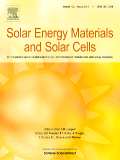
SOLAR ENERGY MATERIALS AND SOLAR CELLS
Scope & Guideline
Leading the Charge in Solar Energy Research
Introduction
Aims and Scopes
- Materials for Solar Cells:
Research on various materials, including silicon, perovskite, and thin-film technologies, aimed at improving efficiency and stability in solar cell applications. - Thermal Energy Storage Solutions:
Investigation of phase change materials (PCMs) and molten salts for efficient thermal energy storage, highlighting their integration with solar technologies. - Corrosion and Reliability Studies:
Analysis of the durability and corrosion behavior of materials used in solar energy systems, particularly under high-temperature and corrosive environments. - Innovative Fabrication Techniques:
Development of new fabrication methods, including printing and coating techniques, to enhance the performance and reduce costs of solar cells and related components. - Electrochromic and Smart Window Technologies:
Exploration of electrochromic materials and devices for dynamic control of light and heat, integrating energy-saving technologies into building designs. - Photothermal Conversion:
Research on materials and systems that enhance the conversion of solar energy into thermal energy, including advanced nanomaterials and hybrid systems. - Modeling and Simulation:
Utilization of computational methods to model the performance of solar cells and thermal systems, aiding in the design and optimization of solar technologies.
Trending and Emerging
- Perovskite Solar Cells:
A significant increase in research on perovskite materials, focusing on enhancing efficiency, stability, and scalability for commercial applications. - Hybrid and Tandem Solar Cells:
Emerging interest in hybrid systems that combine different types of solar cells to maximize efficiency, particularly the integration of perovskites with silicon. - Advanced Thermal Management Systems:
Growing research on innovative thermal management solutions, including the use of phase change materials and nanofluids for enhanced heat storage and transfer. - Electrochromic and Smart Materials:
Rising focus on electrochromic technologies for dynamic control of light and energy in buildings, showcasing the integration of solar energy solutions with smart technologies. - Machine Learning and AI in Solar Research:
Increasing utilization of machine learning techniques for optimizing solar cell designs, predicting performance, and enhancing manufacturing processes. - Sustainable Materials and Recycling:
An expanding scope on the recycling of materials used in solar cells and the development of sustainable alternatives, reflecting a broader commitment to environmental considerations. - Energy Efficiency in Building-Integrated Photovoltaics (BIPV):
Growing emphasis on BIPV systems that combine solar energy generation with building materials, promoting energy efficiency and aesthetic integration.
Declining or Waning
- Conventional Silicon Solar Technologies:
Research specifically focused on traditional monocrystalline and polycrystalline silicon solar cells has decreased, possibly due to the shift towards more innovative materials like perovskites. - Single-Function Solar Collectors:
Interest in simple solar thermal collectors without advanced functionalities or integrations, such as hybrid systems, appears to be waning as researchers seek more multifunctional approaches. - Basic Photovoltaic Efficiency Studies:
Studies purely aimed at measuring and reporting efficiency without exploring new materials or methods are less common, reflecting a move towards comprehensive analyses that include durability and performance under real-world conditions. - Standardized Testing Protocols:
The emphasis on traditional testing methods has diminished as more innovative and context-specific evaluation techniques gain traction.
Similar Journals

Solar Energy
Pioneering research in solar innovation and sustainability.Solar Energy is a premier academic journal published by PERGAMON-ELSEVIER SCIENCE LTD, focusing on the advancements and research in the field of solar energy technology, sustainability, and related sciences. With an ISSN of 0038-092X and E-ISSN 1471-1257, this influential journal has been at the forefront of renewable energy research since its inception in 1957, with a commitment to fostering scientific communication up to the year 2024. Recognized globally, it holds an impressive impact factor, ranking in the Q1 category in both Materials Science and Renewable Energy, Sustainability and the Environment, positioning it among the top journals in its field—ranked #50/463 in General Materials Science and #34/270 in Renewable Energy. The journal serves as a vital platform for researchers, professionals, and students, providing access to groundbreaking studies, innovative methodologies, and comprehensive reviews that advance the understanding and application of solar energy technologies. While the journal is not open access, its rigorous peer-review process ensures the publication of high-quality, impactful articles that are invaluable to the academic community striving to address global energy challenges.

Journal of Energy Storage
Pioneering discoveries in renewable energy storage.Welcome to the Journal of Energy Storage, a premier publication dedicated to advancing the science and technology of energy storage systems. Published by ELSEVIER in the Netherlands, this esteemed journal boasts a significant impact in the field, categorized as Q1 in Electrical and Electronic Engineering, Energy Engineering and Power Technology, and Renewable Energy, Sustainability and the Environment for 2023. With a commitment to disseminating high-quality research, the journal provides a platform for the latest innovations and findings, covering a broad spectrum of topics from battery technologies to thermal energy storage. As a must-read for researchers, professionals, and students alike, the Journal of Energy Storage facilitates vital discussions that shape the future of sustainable energy practices. While presently offering select access options, the journal continues to expand its reach and influence within the academic community, encouraging submissions that drive forward our understanding of energy solutions. Discover the forefront of energy storage research and contribute to a world increasingly reliant on efficient energy management.
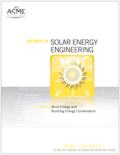
JOURNAL OF SOLAR ENERGY ENGINEERING-TRANSACTIONS OF THE ASME
Illuminating the Path to Solar Energy Excellence.JOURNAL OF SOLAR ENERGY ENGINEERING-TRANSACTIONS OF THE ASME is a premier publication dedicated to advancing the field of solar energy engineering, under the auspices of the prestigious American Society of Mechanical Engineers (ASME). With the ISSN 0199-6231 and E-ISSN 1528-8986, this journal has established itself as a critical resource for researchers and professionals alike, particularly in the areas of energy engineering and renewable technology. Currently enjoying an impact factor that places it in the Q2 category for Energy Engineering and Power Technology and Q3 for Renewable Energy, Sustainability, and the Environment, this journal effectively bridges impactful research and practical application. Spanning contributions from 1980 to 2025, the journal emphasizes empirical studies, innovative methodologies, and sustainable solutions that resonate with the growing global demand for renewable energy. The journal’s commitment to quality is reflected in its competitive Scopus rankings: 97th out of 272 in Energy Engineering and 124th out of 270 in Renewable Energy. Although not an Open Access journal, it remains a vital forum for disseminating research that shapes our energy future. Located in New York, this journal serves as a cornerstone for those in academia and industry to stay abreast of the latest advancements in solar energy technologies and their application in sustainable development.
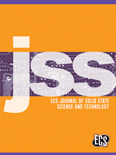
ECS Journal of Solid State Science and Technology
Catalyzing Breakthroughs in Solid State TechnologiesECS Journal of Solid State Science and Technology, published by the Electrochemical Society, is a prominent journal dedicated to the advancement of research in the field of electronic, optical, and magnetic materials. With an ISSN of 2162-8769 and an E-ISSN of 2162-8777, this journal has established a significant presence since its inception in 2012, spanning critical developments in solid-state science that are essential for innovative technologies. Operating within the United States and recognized for its global outreach, it holds a respectable Q3 category ranking in the materials science category as of 2023, reflecting its commitment to high-quality research and its role in bridging theoretical and applied aspects of materials science. Researchers, professionals, and students alike will find vital information and cutting-edge studies that further the understanding and applications of solid-state technologies. The journal is accessible to an extensive audience, making it an invaluable resource for those engaged in the ever-evolving landscape of materials science.
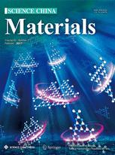
Science China-Materials
Leading the Charge in Materials Research Excellence.Science China-Materials is an esteemed peer-reviewed journal dedicated to advancing the field of materials science, published by SCIENCE PRESS. With a strong focus on innovative research and applications, this journal provides an essential platform for disseminating groundbreaking findings in materials development, characterization, and engineering. Since its inception, Science China-Materials has achieved an impressive Q1 ranking in the Materials Science (miscellaneous) category, reflecting its commitment to quality and the impact of its publications, as indicated by its 86th percentile ranking in Scopus. The journal is set to converge its contributions from 2016 to 2024, making it a vital resource for researchers and professionals interested in the latest advancements and trends in materials science. As an open access publication, it ensures that knowledge is freely available to a global audience, promoting collaboration and innovation across disciplines. The journal is headquartered in Beijing, China, and continues to attract high-quality submissions from leading experts in the field.
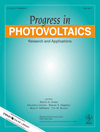
PROGRESS IN PHOTOVOLTAICS
Transforming Sunlight into Sustainable SolutionsPROGRESS IN PHOTOVOLTAICS, published by Wiley, is a leading scholarly journal dedicated to the advancement of photovoltaic technology and its applications. Since its inception in 1993, this journal has maintained a strong focus on the latest developments in solar energy, addressing both theoretical and practical aspects of photovoltaic systems. With an impressive impact factor and consistently ranked in the Q1 quartile across four key categories—Condensed Matter Physics, Electrical and Electronic Engineering, Electronic, Optical and Magnetic Materials, and Renewable Energy, Sustainability, and the Environment—PROGRESS IN PHOTOVOLTAICS is regarded as a pillar of scholarly excellence. The journal is essential for researchers, professionals, and students who seek to stay at the forefront of innovations and sustainability in the energy sector. Although it does not primarily offer open access, its commitment to advancing the understanding of photovoltaic technologies ensures that readers can expect high-quality, peer-reviewed research that pushes the boundaries of current knowledge.

EnergyChem
Transforming Energy Chemistry for Sustainable Technologies.EnergyChem is a premier academic journal published by ELSEVIER, dedicated to advancing the field of energy chemistry and its applications in sustainable technologies. With a strong focus on biomaterials and innovative chemistry solutions, the journal has established itself as a leading platform within the research community, boasting remarkable rankings such as Q1 in Biomaterials, Chemistry (miscellaneous), and Energy (miscellaneous) for 2023. Notably, it ranks 2nd in both Materials Science and Energy categories, reflecting the high caliber of research it publishes, which is crucial for tackling pressing global energy challenges. Since its inception in 2019, EnergyChem has been committed to open and accessible research, making it an invaluable resource for researchers, professionals, and students striving for cutting-edge insights in energy conversion and storage. With its target audience in mind, the journal encourages submissions that explore innovative materials, processes, and applications that will contribute to a sustainable energy future.

Advanced Energy Materials
Driving Sustainability through Cutting-edge ResearchAdvanced Energy Materials is a leading academic journal published by WILEY-V C H VERLAG GMBH, focusing on the rapidly evolving fields of materials science and renewable energy technologies. With an impressive impact factor and recognition as a top-tier journal, it ranks within the Q1 category in both Materials Science (miscellaneous) and Renewable Energy, Sustainability and the Environment as of 2023. Spanning from 2011 to 2024, the journal serves as an essential platform for researchers, professionals, and students eager to explore groundbreaking advancements in energy materials, fostering innovative solutions to global sustainability challenges. The journal's authoritative content is supported by rigorous peer review, ensuring high-quality research contributes to the academic community and beyond. Located in Weinheim, Germany, Advanced Energy Materials stands at the forefront of scientific inquiry, making it an invaluable resource for those invested in the future of energy and materials science.

Solar RRL
Catalyzing discoveries in solar energy conversion and efficiency.Solar RRL, published by WILEY-V C H VERLAG GMBH in Germany, is a premier journal dedicated to advancing the field of solar energy research and technologies. With an impressive Q1 ranking across key disciplines—including Atomic and Molecular Physics, Electrical and Electronic Engineering, and Energy Engineering—this journal stands out as an authoritative source of high-impact research. Since its inception in 2017, Solar RRL has provided a platform for the dissemination of innovative ideas and findings, making vital contributions to the understanding of solar energy conversion, efficiency improvements, and sustainable technology. Researchers, professionals, and students seeking to stay at the forefront of solar energy advancements will find invaluable insights and rigorous studies in its pages. Although currently not an open-access journal, Solar RRL offers a subscription model that gives readers access to cutting-edge research that shapes the future of energy technology.

ISI Bilimi ve Teknigi Dergisi-Journal of Thermal Science and Technology
Pioneering Research in Thermal InnovationsISI Bilimi ve Teknigi Dergisi-Journal of Thermal Science and Technology, published by the Turkish Society of Thermal Sciences and Technology, serves as a pivotal platform for disseminating cutting-edge research in the fields of thermal science, engineering, and materials science. With an ISSN of 1300-3615, this journal not only addresses critical advancements from 2008 to 2013 and 2015 to 2023, but also operates under the auspices of rigorous peer review, contributing to its reputable standing in academia. As a Q4 ranked journal in various disciplines including Atomic and Molecular Physics, Engineering, and Materials Science, it offers researchers and professionals essential insights, though it does not currently operate under an open access model. Situated in Ankara, Turkey, this journal is key to fostering collaboration and innovation among scholars, making it an indispensable resource for students and professionals eager to engage with the latest thermal science methodologies and technologies.